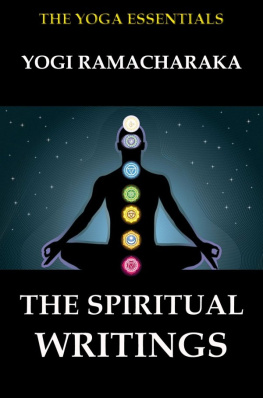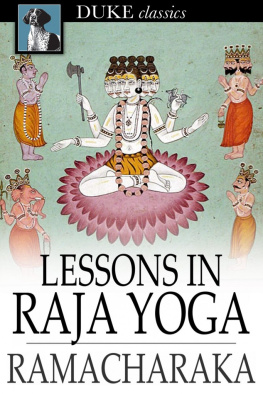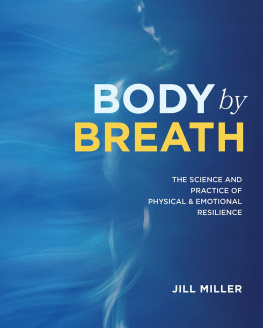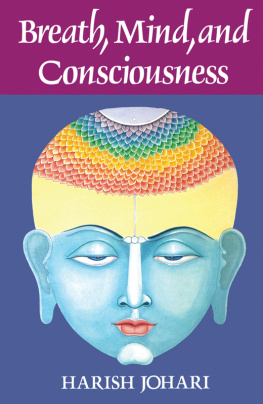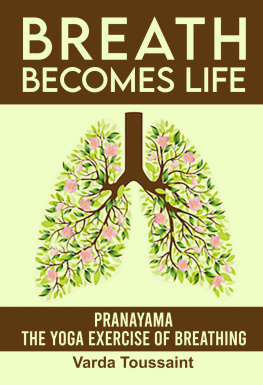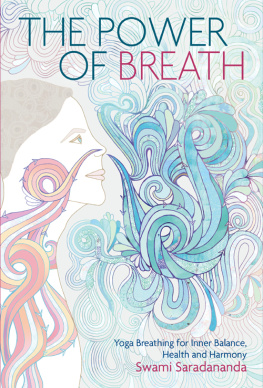
Yogi Ramacharaka, William Walker Atkinson
The Hindu-Yogi Science of Breath
A Complete Manual of THE ORIENTAL BREATHING PHILOSOPHY of Physical, Mental, Psychic and Spiritual Development.
The Western student is apt to be somewhat confused in his ideas regarding the Yogis and their philosophy and practice. Travelers to India have written great tales about the hordes of fakirs, mendicants and mountebanks who infest the great roads of India and the streets of its cities, and who impudently claim the title "Yogi." The Western student is scarcely to be blamed for thinking of the typical Yogi as an emaciated, fanatical, dirty, ignorant Hindu, who either sits in a fixed posture until his body becomes ossified, or else holds his arm up in the air until it becomes stiff and withered and forever after remains in that position, or perhaps clenches his fist and holds it tight until his fingernails grow through the palms of his hands. That these people exist is true, but their claim to the title "Yogi" seems as absurd to the true Yogi as does the claim to the title "Doctor" on the part of the man who pares one's corns seem to the eminent surgeon, or as does the title of "Professor," as assumed by the street corner vendor of worm medicine, seem to the President of Harvard or Yale.
There have been for ages past in India and other Oriental countries men who devoted their time and attention to the development of Man, physically, mentally and spiritually. The experience of generations of earnest seekers has been handed down for centuries from teacher to pupil, and gradually a definite Yogi science was built up. To these investigations and teachings was finally applied the term "Yogi," from the Sanscrit word "Yug," meaning "to join." From the same source comes the English word "yoke," with a similar meaning. Its use in connection with these teachings is difficult to trace, different authorities giving different explanations, but probably the most ingenious is that which holds that it is intended as the Hindu equivalent for the idea conveyed by the English phrase, "getting into harness," or "yoking up," as the Yogi undoubtedly "gets into harness" in his work of controlling the body and mind by the Will.
Yoga is divided into several branches, ranging from that which teaches the control of the body, to that which teaches the attainment of the highest spiritual development. In the work we will not go into the higher phases of the subject, except when the "Science of Breath" touches upon the same. The "Science of Breath" touches Yoga at many points, and although chiefly concerned with the development and control of the physical, has also its psychic side, and even enters the field of spiritual development.
In India there are great schools of Yoga, comprising thousands of the leading minds of that great country. The Yoga philosophy is the rule of life for many people. The pure Yogi teachings, however, are given only to the few, the masses being satisfied with the crumbs which fall from the tables of the educated classes, the Oriental custom in this respect being opposed to that of the Western world. But Western ideas are beginning to have their effect even in the Orient, and teachings which were once given only to the few are now freely offered to any who are ready to receive them. The East and the West are growing closer together, and both are profiting by the close contact, each influencing the other.
The Hindu Yogis have always paid great attention to the Science of Breath, for reasons which will be apparent to the student who reads this book. Many Western writers have touched upon this phase of the Yogi teachings, but we believe that it has been reserved for the writer of this work to give to the Western student, in concise form and simple language, the underlying principles of the Yogi Science of Breath, together with many of the favorite Yogi breathing exercises and methods. We have given the Western idea as well as the Oriental, showing how one dovetails into the other. We have used the ordinary English terms, almost entirely, avoiding the Sanscrit terms, so confusing to the average Western reader.
The first part of the book is devoted to the physical phase of the Science of Breath; then the psychic and mental sides are considered, and finally the spiritual side is touched upon.
We may be pardoned if we express ourselves as pleased with our success in condensing so much Yogi lore into so few pages, and by the use of words and terms which may be understood by anyone. Our only fear is that its very simplicity may cause some to pass it by as unworthy of attention, while they pass on their way searching for something "deep," mysterious and non-understandable. However, the Western mind is eminently practical, and we know that it is only a question of a short time before it will recognize the practicability of this work.
We greet our students, with our most profound salaam, and bid them be seated for their first lessons in the Yogi Science of Breath.
CHAPTER II. "BREATH IS LIFE."
Life is absolutely dependent upon the act of breathing. "Breath is
Life."
Differ as they may upon details of theory and terminology, the
Oriental and the Occidental agree upon these fundamental principles.
To breathe is to live, and without breath there is no life. Not only are the higher animals dependent upon breath for life and health, but even the lower forms of animal life must breathe to live, and plant life is likewise dependent upon the air for continued existence.
The infant draws in a long, deep breath, retains it for a moment to extract from it its life-giving properties, and then exhales it in a long wail, and lo! its life upon earth has begun. The old man gives a faint gasp, ceases to breathe, and life is over. From the first faint breath of the infant to the last gasp of the dying man, it is one long story of continued breathing. Life is but a series of breaths.
Breathing may be considered the most important of all of the functions of the body, for, indeed, all the other functions depend upon it. Man may exist some time without eating; a shorter time without drinking; but without breathing his existence may be measured by a few minutes.
And not only is Man dependent upon Breath for life, but he is largely dependent upon correct habits of breathing for continued vitality and freedom from disease. An intelligent control of our breathing power will lengthen our days upon earth by giving us increased vitality and powers of resistance, and, on the other hand, unintelligent and careless breathing will tend to shorten our days, by decreasing our vitality and laying us open to disease.
Man in his normal state had no need of instruction in breathing. Like the lower animal and the child, he breathed naturally and properly, as nature intended him to do, but civilization has changed him in this and other respects. He has contracted improper methods and attitudes of walking, standing and sitting, which have robbed him of his birthright of natural and correct breathing. He has paid a high price for civilization. The savage, to-day, breathes naturally, unless he has been contaminated by the habits of civilized man.
The percentage of civilized men who breathe correctly is quite small, and the result is shown in contracted chests and stooping shoulders, and the terrible increase in diseases of the respiratory organs, including that dread monster, Consumption, "the white scourge." Eminent authorities have stated that one generation of correct breathers would regenerate the race, and disease would be so rare as to be looked upon as a curiosity. Whether looked at from the standpoint of the Oriental or Occidental, the connection between correct breathing and health is readily seen and explained.
Next page

